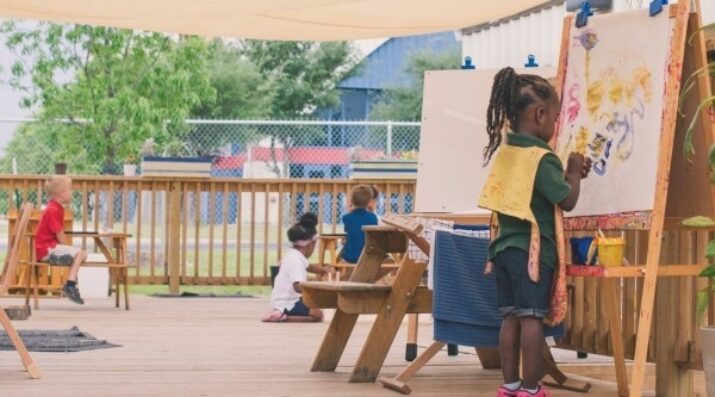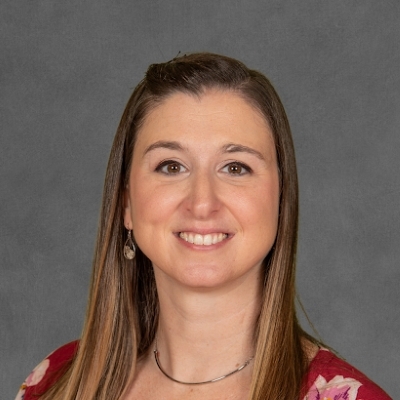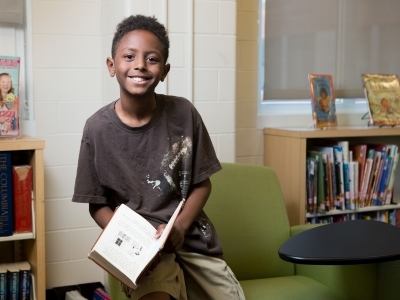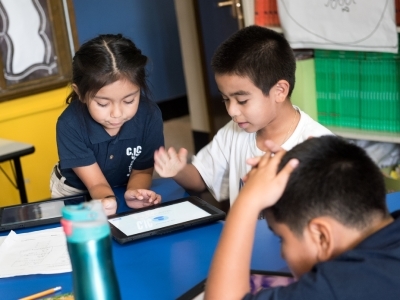Finding Healing through Art and Active Meditation
Topics

Today’s learners face an uncertain present and a rapidly changing future that demand far different skills and knowledge than were needed in the 20th century. We also know so much more about enabling deep, powerful learning than we ever did before. Our collective future depends on how well young people prepare for the challenges and opportunities of 21st-century life.
Active meditation with art can help a whole classroom of students (and their teacher!) focus, immerse in their work, and build resilience and balance in a world that rarely slows down.
When people first hear the words art therapy or meditation, their minds often jump to certain images: sitting cross-legged in silence with no thoughts allowed, or painting colors that directly match emotions, such as blue for sadness, red for anger. But in my experience as an art educator and someone who’s personally walked through grief and anxiety, these practices are so much deeper, more flexible, and more life-giving than most people realize.
My journey into art therapy and active meditation began in my late teens. At 18, I lost my dad suddenly to illness. I wasn’t prepared for that kind of loss, and instead of processing it, I tried to carry on as though life was “normal.” But by my twenties, the effects caught up with me via anxiety, OCD tendencies, and an overwhelming sense that something wasn’t right.
Getting help was one of the bravest and most important choices I made. With the support of a doctor, I was diagnosed with generalized anxiety disorder. More importantly, I was introduced to mindfulness, active meditation, and the power of self-talk. I learned that while medication can be part of healing, true growth requires addressing the underlying patterns in our minds, bodies, and daily actions.
As an art teacher, I began to see connections everywhere. The tools I was learning to support myself could also support my students and colleagues. I started sharing openly with faculty and staff, normalizing conversations about mental health in spaces where it often stays hidden. With students, I wove in small moments of mindfulness during art lessons. Even though I only see each class for 45 minutes a week, those moments matter.
How Art Becomes Active Meditation
Active meditation simply means focusing your mind while your body is engaged in an activity. It can be as simple as washing the dishes, going for a walk, or yes, creating art. Unlike traditional meditation, where the expectation is often complete stillness and silence, active meditation offers a flexible and approachable way to slow down.
Art naturally lends itself to this practice. When you’re coloring in a coloring book, tracing patterns, or molding clay, you can let your mind focus on your breath, your movements, or gentle reflective questions. For many, this becomes a safe space to express feelings that words can’t quite capture.
Of course, art doesn’t work this way for everyone; some people find it stressful. That’s why I emphasize accessibility: you don’t need to be “good” at art to benefit. Patterning, coloring, or even doodling can become meditative practices when approached with presence.
A Classroom Story
One of my favorite examples of using art and mindfulness in the classroom comes from a fifth-grade class experience. Fifth grade can be a transitional, high-energy year, and this particular group was especially challenging—lots of distractions, lots of restlessness. We were working on a lesson inspired by Indian mehndi patterns, tracing hands and filling them with radial designs.
At first, the room was as chaotic as ever. But when I began layering in mindful breathing, inhale for four, exhale for four, and giving space for quiet intervals while students worked, something shifted. Slowly, the room grew silent. Every single student was focused, immersed in their designs.
It was one of those goosebump moments. When I told my colleagues, they were shocked. I was shocked too. But it showed me, and them, how powerful it is to pair creativity with mindfulness. For kids whose brains often run a mile a minute, the combination provided calm, focus, and even joy.
Why It Matters Now More than Ever
Today’s students are growing up in a world of constant stimulation, phones, social media, and fast-paced entertainment. Even my own daughters struggle with boredom during car rides because they’re so used to instant gratification through their digital devices. But learning how to pause, breathe, and be present is essential for their mental health.
That’s where active meditation and art therapy come in. They offer a counterbalance, helping students (and adults!) slow down, check in with themselves, and build resilience against anxiety and overwhelm.
And it doesn’t have to take hours. Give yourself and/or your students a coloring book and five quiet minutes. A walk around the school building. These small practices add up, like an apple a day for your mental wellness.
Moving Forward Together
For me, being open about mental health is non-negotiable. Anxiety is not something “wrong” with someone; rather, it’s part of being human. What matters is whether we have tools to manage it and the courage to practice using them regularly.
That’s what art therapy and active meditation have given me: a way to heal, a way to teach, and a way to connect more deeply with others. And it’s what I hope to share with every student, teacher, and parent I work with.
Because creativity isn’t just about making beautiful things; it’s about making space for healing, expression, and balance in a world that rarely slows down.
Listen: Art Therapy and Active Meditation in School
NGLC is grateful for our collaboration and partnership with EDU Café Podcast that brings fresh voices and insights to the blog. Listen to this EDU Café episode where Kelly Murphy defines art therapy and active meditation, the first of three episodes on this topic.
Photo at top courtesy of Montessori For All




